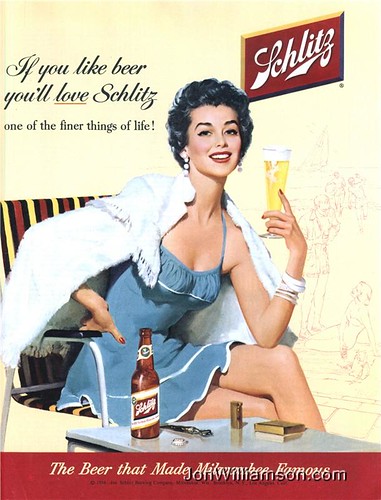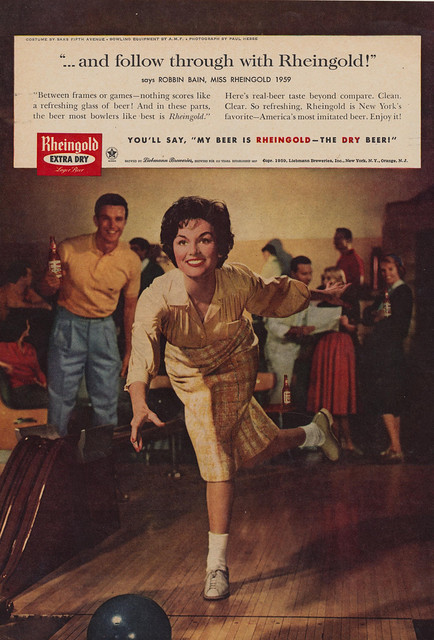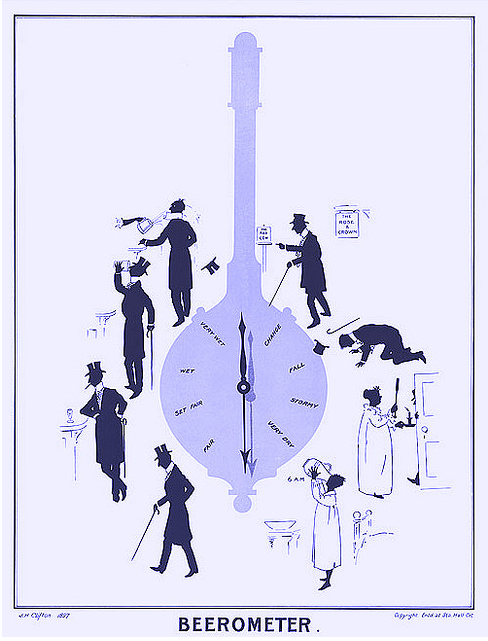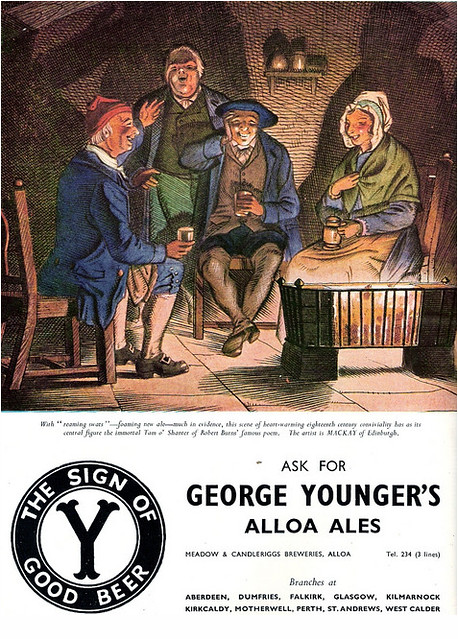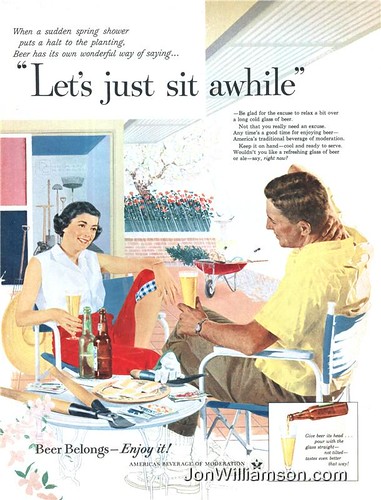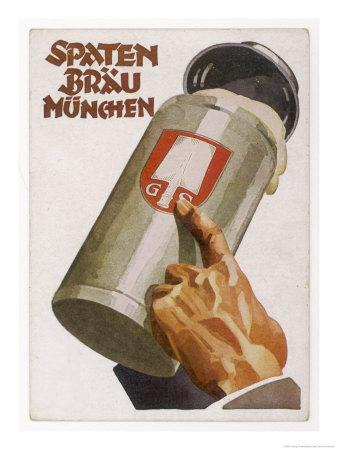
Friday’s ad is for Schlitz, from the 1950s. Featuring a decked-out woman of leisure relaxing by the pool, appointed with fashionable digs and seemingly expensive accessories on the table in front of her and, most importantly, drinking a Schlitz. The tagline, “one of the finer things of life!,” tells you everything you need to know about why her hand is on her hip. She definitely a “have,” not one of those “have nots.”
